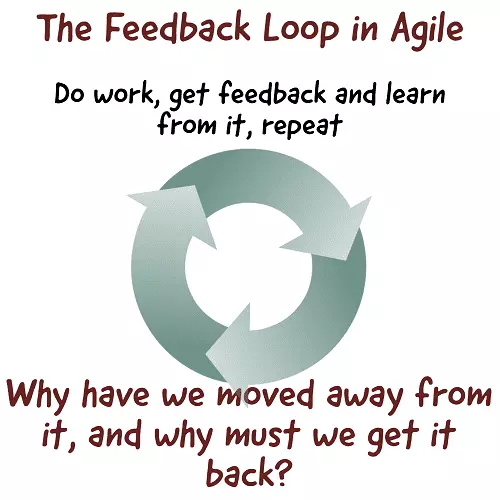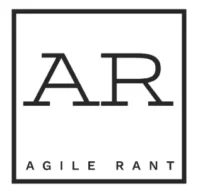
Get ready to dive into the exciting world of the Agile feedback loop! Imagine a process that allows your Agile team to present their work directly to users and receive valuable feedback. This feedback acts as the spark that ignites new ideas and opens the door to endless learning opportunities. Brace yourself for an exhilarating journey of continuous improvement and innovation!
Unleash the power of the Agile feedback loop! It’s the secret to understanding and delivering exactly what users desire. Embrace user feedback to excel in software and product development, delivering top-quality and value in an efficient manner. Curious about how a shorter feedback loop can enhance quality? You’re in for a treat! Explore further to learn more!
What Is The Agile Feedback Loop?
Welcome to the exciting world of the Agile feedback loop – a powerful tool to enhance your quality and spark innovation! Beyond quick feedback, it’s a dynamic exchange of information, evaluation, and continuous improvement. Envision your Agile team confidently sharing their work with users, receiving valuable evaluations, and using that knowledge to drive decision-making and iterative development.
But wait, this isn’t just about software demos; it’s a game-changer for refining assumptions, validating ideas, and strengthening your entire process. With Agile’s learning and user feedback principles at the core, you’ll see every aspect of your project rise to new heights.
Gone are the days of guessing what users want; embrace the power of real feedback. Say goodbye to lengthy, uncertain journeys – welcome the efficient, effective road to success. In a world where excellence is the norm, the Agile feedback loop is your secret weapon for making everything better, every step of the way. Get ready to revolutionize your approach and unlock the true potential of Agile excellence!
Agile Feedback Loops Are Critical To Software Dev
Receiving feedback is crucial for product development, enabling necessary adjustments to enhance the software or product. It’s all about engaging with users and stakeholders.
Without honest and timely feedback, it’s challenging to gauge whether you’re heading in the right direction. Collaborating with users allows the software team to create products that truly meet user needs. Integrating continuous feedback enables ongoing improvement—a goal we all aim for.
User feedback is valuable as it’s free from the biases of the creator, who may overlook certain aspects due to assumptions. Users prioritize using the product according to their needs, making their feedback essential. Therefore, it’s important to prioritize feedback from stakeholders and users.
We Strayed From Good Feedback
I believe that as processes evolved and improved, we looked for ways to bypass feedback, perhaps viewing it as a means of efficiency. It seemed that obtaining feedback from users was consuming too much time, so the idea was to proceed without it. However, this approach is flawed. Even with proficient cross-functional teams, effective work still depends on valuable input received through feedback processes.
There may have been a notion that as team members naturally progress in their learning, they would require less user feedback. As they become familiar with software, products, and business needs, it might seem that they need less information to begin. Nevertheless, these factors do not eliminate the necessity for quality feedback.
The lack of timely or any feedback in the process is a fundamental issue with the Waterfall development methodology. Constructing software demands feedback, and we must return to that principle. The Agile feedback loop addresses this concern.
Requirements Can’t Replace Agile Feedback Loops
Another reason for our deviation stems from the use of more traditional software development methods, particularly those involving requirements. Requirements are intended to precisely outline what is necessary, serving as a list of needs and objectives that guide the team’s efforts.
Frequently, these requirements are formulated within a formal and structured process that involves business users. These users approve the requirements, which the team then implements. However, the requirements do not convey the entire story. Moreover, without visual and tangible elements for users to assess, they may not grasp all the requirements, rendering it impossible to fulfill them. Nevertheless, we established the requirement process in an attempt to gather all necessary information upfront for the work ahead.
The endeavor to gather all requirements in advance also originates from project management techniques and processes. In software projects, an effort is made to establish the requirements beforehand, enabling the allocation of resources and subsequent organization of time and budget.
A significant flaw in this approach is the inability to fully comprehend all requirements upfront. The waterfall model is inherently disadvantaged compared to Agile methods when dealing with complex and evolving requirements. Understanding all the intricacies of the requirements in advance is simply unfeasible, not to mention predicting the time and effort required to complete them.
We attempt to decipher everything beforehand.
We often assume that we can solve everything on our own. However, we should only aim to understand enough to begin. Then, we should create draft versions of our work, which are ready for feedback. In software and product development, there is a trend towards upfront planning.
I believe that there is a significant difference between planning for work and attempting to understand the work before beginning. It is acceptable to plan for work and try to identify potential issues that your team may face. However, attempting to understand the details of the work before beginning can lead to problems. This approach is not part of the Agile Scrum development methodology.
Expectations Influence Completion
A common focus in software development revolves around the work’s due date, set by individuals not directly involved in the task. The due date is intended to signify when the work ought to be completed. Nevertheless, the work should be finished once the software or product achieves its necessary objective, not merely on a predetermined date.
It’s crucial to shift expectations away from expecting a completed work solely because a date has been reached. Instead, embrace iterations as opportunities to inspect the work, adjust the course, and determine if the work has been completed. If it has, that’s fantastic. If not, the work continues. It’s essential to allow for growth and make use of the Agile feedback loop. This is integral to an iterative mindset and a solid Agile process.
Embrace Criticism & Move Forward
Throughout our journey, we encountered criticism. However, rather than fearing it, we should glean insights from it. Criticism forms the foundation of the feedback loop, relying on genuine and constructive input. In certain cultures, team members may feel slighted if feedback necessitates significant alterations to their work, essentially implying they were mistaken and need to make adjustments. I contend that this is an inherent part of the process and is bound to occur at times. Embracing both positive and negative feedback is crucial for optimal learning.
Moreover, without the initial work and the capacity to obtain genuine feedback, one would not be able to receive such feedback and make necessary adjustments. Therefore, it is imperative to utilize criticism and learn from it. Criticism arises from engaging with users and stakeholders, proving to be invaluable to the team. It should be leveraged to enhance software quality, efficiency, and ultimately deliver business value.
As a product owner, scrum master, or project manager, it is essential to facilitate feedback loops for the team and not impede or hinder the process. The team requires it to thrive in the software development process, particularly within an Agile environment. Therefore, enabling the team’s self-organization to receive and respond to feedback is vital. Embracing and advocating for this approach will genuinely benefit the team.
Better Solutions Thru The Agile Feedback Loop
Here are some ways to improve solutions by utilizing the feedback loop and user interaction. These ideas will promote better feedback, ultimately enhancing the quality of your product and software. The feedback system can help you create superior products.
Testing Assumptions Requires Feedback
There is no definitive method to confirm the accuracy of your assumptions, except for receiving genuine software feedback. The most valuable feedback comes directly from users. Alternatively, you can gather indirect feedback by observing user behavior and collecting data on their interactions with your assumptions. If direct user feedback is unavailable, indirect feedback is the next best option. Agile’s effective feedback loops can be the most effective means of delivering high-quality software. Therefore, it’s crucial to incorporate customer feedback into software development and utilize the Agile feedback loop to test ideas and obtain genuine responses.
Get info, Solutions, Get Feedback, Repeat
The feedback process can be straightforward if you allow it to be. We often complicate it with formal rules and frameworks, which can hinder progress. However, what you really need is simple: feedback from real users. Do your best work in smaller increments, then promptly present it to users. Obtain their feedback, learn from it, adjust your work, and repeat the process.
Many things tend to interfere with this, but for genuinely high-quality products, as well as achieving results in shorter time frames, feedback loops are absolutely crucial. Enhance your software quality by swiftly gathering feedback from users. Maintain open communication with users. Utilize incremental progress to deliver work in smaller portions, ultimately leading to better outcomes.
This process of doing, learning from it, and making adjustments is fundamental to Agile concepts and ideas. It is all part of the Agile feedback loop.
The Scientific Process Uses Feedback
The scientific process involves receiving feedback through testing a hypothesis. Scientists use feedback to test their hypotheses and obtain accurate solutions. They conduct research, form hypotheses, create solutions, and test them, measuring the results as a feedback process.
While their process may not always involve interacting with users, it ultimately makes no difference for the process and end result. In software, the only real way to determine if a user’s problem has been solved or their goal has been met is by obtaining feedback from the user, as they are the best source of information.
Agile Feedback Loop – Include In Your Processes
The most effective method for enhancing software is through feedback loops. Embrace the feedback component of your Agile development process and do not overlook interactions with users and stakeholders. Agile teamwork necessitates both on and off team interactions.
Recall the principles of the Agile manifesto, particularly the emphasis on individuals and interactions over processes and tools. Construct your work around these interactions to maximize efficiency, quality, and value. Interacting with users and stakeholders will assist you in achieving the objectives of your Agile project.
Agile Feedback Loop Wins Over Requirements
I recently finished working through an extensive and detailed list of requirements. The team delivered a high-quality product, investing a significant amount of time and effort into the work. However, upon immediate delivery, users raised new concerns, leaving us feeling somewhat disheartened. Despite our efforts to meet the requirements, it became clear that there might be a better approach than solely relying on them.
In software development, requirements often serve as the primary driver for the output, considered the ultimate goal. They dictate what the team must deliver, typically in a detailed and strict manner, aiming to guide the team to the final product. However, they frequently prove to be incomplete, a natural part of the process.
Is there a better way? An approach that guides work without prescribing exact tasks for the team? Could it be that requirements are not as essential as they are made out to be? In the following discussion, I explore some limitations of requirements, common issues, and challenges associated with traditional requirement-driven processes. Additionally, I delve into alternative approaches that align with agile methodologies and aid the team in successful delivery.
Requirements Are Too Stringent Of A Guideline
Requirements are strict guidelines that can stifle creativity and innovation, dictating the work to be done and limiting the team’s ability to find the best solution. This rigidity contradicts agile methodologies, which prioritize responding to change. Instead of strict requirements, agile software development could benefit from processes that use goals or user feedback to determine the work, rather than rigid requirements.
When Are You Done
Sometimes with requirements, you don’t know when you’re done. According to conventional wisdom, if you meet the requirements, you’re done. But without knowing what you’re trying to accomplish, you don’t even know if you’re done. Your team is following a path set out before work begins. It’s not clear from requirements alone if the goals have been met. It’s not always clear if the requirements are still relevant as the work progresses.
Requirements can lull a team into believing that requirements are what they need. But, surprise, sometimes they’re wrong. Like anything in life, requirements contain an element of risk. Sticking strictly to them can lead to the wrong direction. Requirements are based on false assumptions and information, and strict adherence leads to errors.
What’s Better Than Requirements – Agile Feedback Loops Win Anytime
- Working towards goals
- Understanding needs
- Getting honest, timely feedback
Working towards goals allows the team to see the big picture and visualize a way to get there. Because the team understands where they need to go, they are better able to build toward that goal. As a result, the team can create better solutions with better solutions in mind. Identify goals and fill them with information to support delivery of those goals.
Use the goals to guide work. These are high-level, almost high-level, details. Fill the details as you work. This allows you to achieve more and deliver better product. Requests can lull the team into believing that requirements are what is needed. But, as with anything, there is an element of error. Working off of requirements strictly can lead to the wrong path. Requests can be based on incorrect assumptions and information. Strictly following requirements leads to errors.
Use goals as high level details to guide the work. Then fill in the details as you work it, for a better product.
Having an understanding of needs has the same impact. It enables the team to build toward a goal but to do it in a way that benefits the user. While there are many ways to get to a goal, finding something that benefits the user is what makes goals and needs better than requirements. Honest and timeline feedback is a way to fine-tune work.
Build quickly, fail quickly, learn quickly, and course correct quickly. You can never know everything. Get use-able pieces out there in front of people who will use them. Then get feedback. This allows you to figure out how to correct what you have. How to add what you don’t need. And finally, how to move toward the goal of the final product. That’s why real feedback is better than requirements.
Shorten The Feedback Loop For Quality
Everyone strives for better quality. By identifying and addressing issues early on, we can enhance the overall quality. Discovering methods to obtain feedback earlier in the process, enabling us to make necessary corrections and rectify mistakes promptly, ultimately leads to an improvement in quality.
Unlike traditional software development approaches, where implementation occurs only after a lengthy development cycle, Agile methodologies advocate for incremental progress. Instead of a “big bang” approach, where success or failure is determined at the end, Agile emphasizes continuous feedback. This allows us to identify areas that require improvement throughout the development process.
By breaking down tasks into smaller increments and implementing them within shorter timeframes, we create opportunities for early feedback. This enables us to assess what works and what doesn’t, making necessary adjustments along the way. As a result, Agile feedback loops become a powerful tool in ensuring that we build the right things and do so with exceptional quality.
Final Thoughts On Requirements & Agile Feedback Loops
Ultimately, the key to success lies not in rigid requirements, but in a problem-solving mindset. A mindset that embraces flexibility and adaptability. This is what we call an agile mindset. In the realm of agile leadership, feedback is highly valued and recognized for its importance. It is considered a fundamental aspect of the agile principles and should be incorporated into your processes.
Requirements are typically focused on defining the work to be done beforehand. They involve understanding what is needed, the tools and processes to be used, and how to approach the work. However, in the real world, this approach is not always feasible. New projects often come with a multitude of unknowns, changing needs, and evolving technology landscapes.
These factors make it impossible for a team to have all the answers before they begin their work. Instead, the agile approach encourages teams to work towards their needs and goals, figuring out the best way forward at each step of the process. It also emphasizes the importance of gathering feedback from users and stakeholders. This agile mindset and approach are what truly surpasses the limitations of traditional requirements.
The agile model promotes a system and software development approach where you learn about the work in smaller, manageable pieces. This allows for quicker implementation and continuous learning. So why not take advantage of the agile tools available, such as feedback, to build the most valuable software and products possible? Embrace agility, my friends, and let it guide you towards success!
Additional content and books to help with the Agile feedback loop
Additionally, I enjoy the definition of feedback loops from Hubspot, and linking to that helpful text here.


